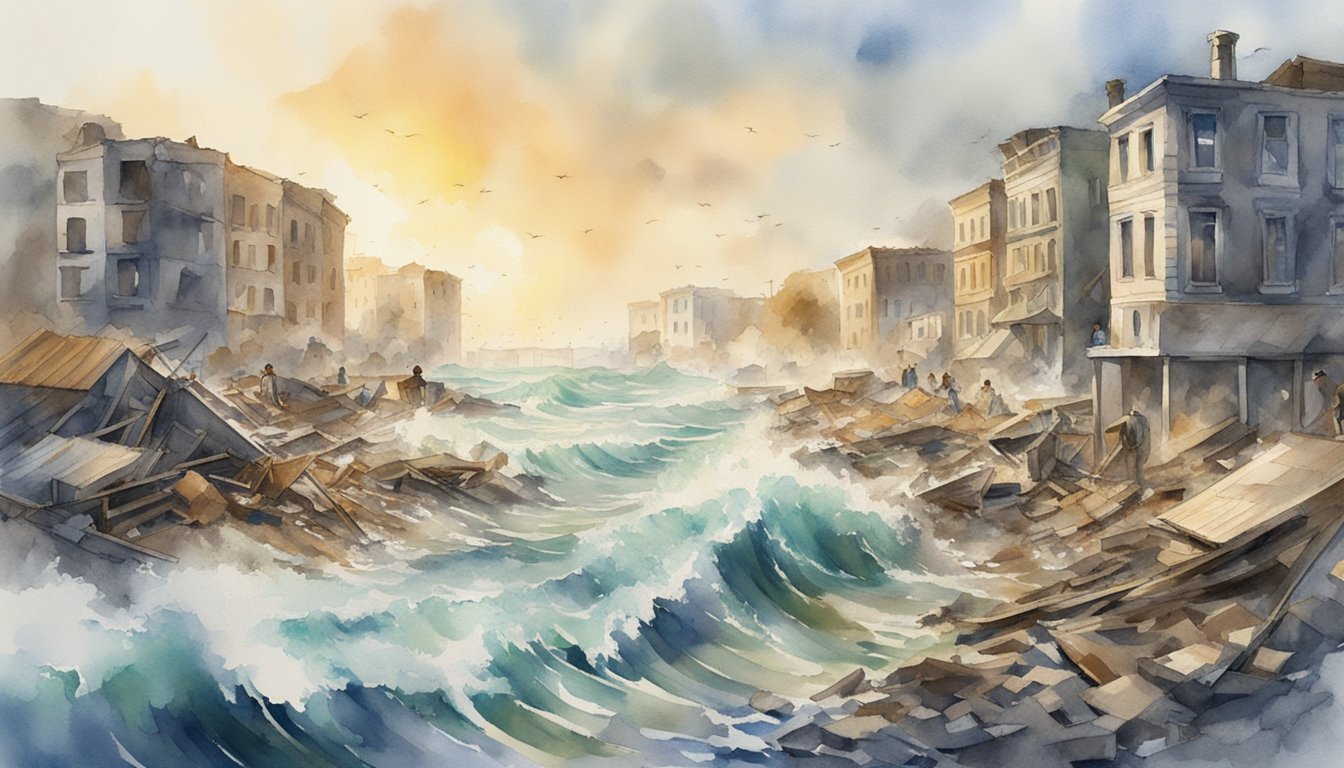Hurricane Sandy Overview
Hurricane Sandy was a monumental storm that left an indelible mark on the Atlantic region, particularly affecting areas such as the Caribbean and the northeastern United States, including New York and New Jersey.
Formation and Classification
Hurricane Sandy began as a tropical wave in the Caribbean Sea in late October 2012. The National Hurricane Center identified it as a tropical depression on October 22, and it was upgraded to a tropical storm the same day. By October 24, Sandy had intensified into a Category 1 hurricane, and it reached Category 2 strength as it moved northward through the Bahamas.
Path and Impact
The path of Sandy was complex as it curved from the Caribbean, impacting Haiti, Cuba, and Puerto Rico, and then headed toward the Eastern Seaboard of the United States. Making landfall in New Jersey on October 29 as a post-tropical cyclone with hurricane-force winds, Sandy’s impact was extensive, reaching multiple states. The Federal Emergency Management Agency (FEMA) declared the event a major disaster, as communities across the U.S. East Coast were affected, with New York and New Jersey experiencing significant damage.
Meteorological Records
Sandy set several meteorological records during its lifetime. It became the largest Atlantic hurricane on record, with a diameter of winds stretching 1,150 miles, according to Wikipedia. The combination of the hurricane with a cold front led to its categorization as a “Superstorm,” an unofficial designation highlighting its unique and destructive nature. The 2012 Atlantic hurricane season will be remembered for Sandy’s unprecedented size and its impact on densely populated areas.
How Can Recovery Efforts from Hurricane Sandy Inform Our Preparedness for Future Earthquakes?
Recovery efforts from Hurricane Sandy highlighted the importance of resilient infrastructure and community engagement. By analyzing these strategies, we can enhance understanding and preparing for earthquakes today. Implementing lessons learned from Sandy can lead to better emergency response systems and stronger, more adaptable communities in the face of future natural disasters.
Consequences and Response

Hurricane Sandy, striking in October 2012, left notable destruction and prompted a comprehensive emergency response. It highlighted vulnerabilities in coastal cities and sparked major restoration efforts and safety measures.
Damage and Restoration
Hurricane Sandy’s intense storm surge and high winds led to significant damage along the New Jersey coast and in New York City, particularly in areas like Staten Island and Lower Manhattan. Public infrastructure, including the subway system, suffered major impacts. Restoration efforts involved rebuilding vital services and reinforcing shorelines against erosion and future storms, a task that the U.S. Army Corps of Engineers took part in. The National Park Service worked on restoration in affected national parks.
Health and Safety
Post-hurricane conditions posed serious health risks, with residents across the Mid-Atlantic, including Pennsylvania and Maine, facing power outages that lasted for days. Emergency measures by organizations such as the American Red Cross and the National Guard were critical in providing shelter and health services. Efforts to ensure safety also included clearing hazardous debris and preventing further harm from damaged infrastructure.
Economic Impact
Economically, the storm caused billions in damages, with an estimated $25.5 billion in recovery funds allocated by FEMA for New York and New Jersey alone. These figures underscore the financial strain inflicted on the region, affecting businesses, transportation, and leading to the closure of the New York Stock Exchange for two days—the first weather-induced closure in over a century. The hurricane disrupted over 20,000 flights, indicative of its expansive reach and the interdependency of modern infrastructure. The economic ripple effects extended as far as Canada and the Midwest, with Ohio and Indiana experiencing secondary impacts.

